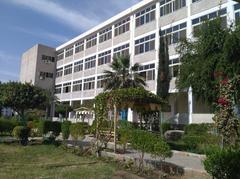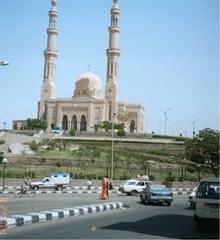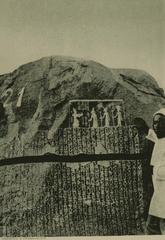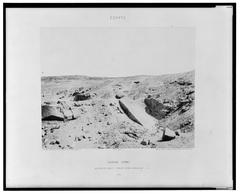Stone Quarries of Assuan: Visiting Hours, Tickets, and Historical Significance
Date: 14/06/2025
Introduction
Set along the majestic Nile near the city of Aswan, the Stone Quarries of Assuan are among Egypt’s most important archaeological treasures. For over 5,000 years, these quarries supplied the granite and sandstone that built Egypt’s iconic temples, obelisks, and statues, including the famed Unfinished Obelisk—one of the ancient world’s most ambitious projects. Today, the quarries provide an unparalleled window into ancient quarrying techniques, labor organization, and the spiritual and cultural significance of stone extraction in Egypt.
This comprehensive guide is designed for travelers, history enthusiasts, and archaeology buffs. It details everything from the quarries’ history and quarrying methods to practical aspects for visitors, including visiting hours, ticket information, accessibility, and nearby attractions. For additional details, expert insights, and travel planning, consult official tourism sources and heritage platforms (Time Travel Turtle; Egypt Day Tours; QuarryScapes).
Table of Contents
- Introduction
- Historical Development of the Assuan Stone Quarries
- Quarrying Techniques and Organization
- Archaeological Evidence and Conservation
- Visitor Information
- FAQ
- Conclusion
- References
Historical Development of the Assuan Stone Quarries
Ancient Origins and Strategic Importance
The Assuan quarries—known as Syene in antiquity—have played a vital role in Egypt’s monumental architecture for millennia. Strategically located near the First Cataract of the Nile, the region provided an abundant source of high-quality granite and sandstone. Quarrying activity in Assuan began as early as the Predynastic period, with evidence found at sites like Gebel es-Sawan North (NGU Special Publication). Aswan’s location as the southern frontier of ancient Egypt made it both a commercial and military hub, as well as the gateway for stone transport to construction sites throughout Egypt (Time Travel Turtle).
The New Kingdom and the Rise of Monumental Stonework
During the New Kingdom (c. 1550–1070 BCE), quarrying activity expanded considerably, especially under Pharaoh Amenhotep III. The period saw an ideological association between stone, the sun god Ra, and royal power, leading to the extraction of vast quantities of granite and silicified sandstone for temples, statues, and solar monuments. Archaeological remains at Gebel Gulab and other West Bank sites document this surge in activity through unfinished objects, ceramic finds, and inscriptions (NGU Special Publication).
Assuan Granite and Sandstone in Architecture
Granite from Assuan was used in some of Egypt’s most famous monuments, such as the obelisks of Karnak and Luxor, the statues of Ramses II at Abu Simbel, and royal sarcophagi. The sandstone quarries at Gebel el-Silsila were equally significant, supplying stone for temples including Karnak, Luxor, and the Ramesseum (Top Ten Egypt). The Unfinished Obelisk—still attached to bedrock—offers a unique, tangible insight into the ambition and challenges of ancient stoneworking (Egypt Tours Plus; Time Travel Turtle).
Quarrying Techniques and Organization
Extraction and Tool Use
Ancient quarrymen relied on dolerite pounders to chip away at the hard granite, creating trenches around the desired blocks. Wooden wedges, soaked in water, were then inserted to split the stone along natural fissures (Top Ten Egypt). At sites like Gebel el-Silsila, visitors can see chisel marks and wedge holes that illustrate this process (Top Ten Egypt).
Transport and Logistics
After extraction, stone blocks were transported to the Nile, dragged on sledges lubricated with water or mud, then loaded onto barges for their journey to distant building sites (Time Travel Turtle). Remains of ramps, slipways, and harbor installations attest to the sophisticated logistics required for moving such massive stones.
Labor and Social Structure
Quarrying was a highly organized, state-directed endeavor. Skilled stonemasons, laborers, and craftsmen worked under royal officials. Inscriptions and marks at the Unfinished Obelisk and other sites document distinct work gangs and their supervisors (Egypt Planners). Temporary settlements, storage facilities, and administrative remains reveal the scale of operations and the support networks for the workforce.
Inscriptions and Religious Aspects
The quarries are rich in inscriptions, ranging from simple worker marks to elaborate hieroglyphic texts and rock-cut shrines. Many record the names of pharaohs, quarry supervisors, and dedications to deities such as Hapi, god of the Nile (Top Ten Egypt). These inscriptions provide insight into the religious beliefs and social organization of the workforce.
Archaeological Evidence and Conservation
Unfinished Monuments and Tool Marks
The Assuan quarries are unique in preserving partially finished structures—including the monumental Unfinished Obelisk—alongside visible tool marks and extraction trenches (NGU Special Publication). These features allow both archaeologists and visitors to reconstruct ancient techniques and workflows (Egypt Tours Plus; Egypt Planners).
Preservation and Global Heritage Value
The quarry landscape on the West Bank of Aswan is considered globally significant for its continuous history of exploitation from prehistory to the end of the pharaonic era (NGU Special Publication). Conservation initiatives focus on balancing heritage preservation with urban development and modern quarrying. The Egyptian Supreme Council of Antiquities established a dedicated department in 2006 to manage and conserve ancient quarries (NGU Special Publication).
Visitor Information
Visiting Hours and Tickets
- Hours: Main sites, including the Unfinished Obelisk, are open daily from 8:00 AM to 5:00 PM (some sites open from 7:00 AM; check locally for seasonal changes) (Egypt Day Tours; Egypt Tour Packages).
- Tickets: As of 2025, tickets for foreign adults are typically 80–120 EGP, with discounts for students and Egyptian nationals. Tickets are available at the gate or through tour operators.
Accessibility and Facilities
The main quarries are open-air sites with uneven terrain and granite outcrops; partial accessibility is provided with marked walkways and some shaded rest areas. Wheelchair access is limited. A visitor center at the Unfinished Obelisk provides bilingual signage and rest areas.
Guided Tours and Special Events
Licensed guides are available at the entrance and through local agencies. Guided tours offer in-depth explanations of quarrying techniques, archaeological features, and history. Occasionally, the site hosts cultural events and educational workshops.
Nearby Attractions and Photography
The quarries are near other historical sites, including Elephantine Island, the Nubian Museum, and Philae Temple. Photography is allowed, but drones require special permission; sunrise and sunset provide the best lighting for photos (Living the Q Life). The Fatimid Cemetery and Western Quarry (Gebal Simaan) provide additional points of interest, though access may require a camel ride or guided hike (PlanetWare).
Frequently Asked Questions (FAQ)
Q: What are the visiting hours of the Stone Quarries of Assuan?
A: Generally 8:00 AM to 5:00 PM daily, with some sites opening at 7:00 AM. Confirm locally for seasonal adjustments.
Q: How much are tickets?
A: Tickets for foreign adults range from 80–120 EGP. Discounts are available for students and nationals.
Q: Are guided tours available?
A: Yes, both on-site and through authorized travel operators.
Q: Is the site wheelchair accessible?
A: The site is partially accessible; much of the terrain is uneven.
Q: What should I bring?
A: Sturdy walking shoes, water, sun protection, and a camera.
Q: Are photography and drones allowed?
A: Photography is allowed; drones require special permission.
Conservation Challenges and Sustainable Tourism
Urban Encroachment and Modern Quarrying
Modern development since the 1960s has surrounded many ancient quarry sites with urban infrastructure, leading to the destruction or partial loss of some archaeological areas. Modern granite extraction and the construction of the Aswan High Dam have also altered the landscape (QuarryScapes). About 10% of Egypt’s ancient quarries are now largely destroyed, and an additional 20% are partially damaged.
Preservation Efforts
Conservation strategies include site management, visitor education, and local community involvement—especially on the West Bank, where Nubian communities provide guided excursions and cultural experiences. The Supreme Council of Antiquities supports training, research, and the development of an “ancient stone center” for ongoing conservation (NGU Special Publication).
Responsible Tourism
Visitors are urged to stay on marked paths, avoid touching ancient tool marks or removing artifacts, and support sustainable tourism initiatives that benefit local communities.
Conclusion
The Stone Quarries of Assuan represent a unique legacy of ancient Egyptian ingenuity, artistry, and monumental ambition. From the Unfinished Obelisk to the extensive quarry landscapes and centuries-old inscriptions, these sites offer a profound glimpse into the techniques, organization, and spiritual life of the ancient world. By visiting responsibly and supporting ongoing conservation, travelers can help ensure that Assuan’s stone heritage endures for generations to come. For guided tours, up-to-date information, and immersive audio experiences, download the Audiala app and explore related resources.
Alt text: Unfinished Obelisk embedded in granite bedrock at Aswan Stone Quarries
Alt text: Towering quarry face with visible tool marks at Gebel el-Silsila near Aswan
Interactive Map: Explore the Aswan Stone Quarries and nearby historical sites here
References and Further Reading
- Discovering the Aswan Stone Quarries: History, Techniques, and Visitor Guide, 2025, Time Travel Turtle (https://www.timetravelturtle.com/egypt/things-to-do-in-aswan/)
- Visiting the Aswan Stone Quarries: History, Tickets, and Travel Tips for Egypt’s Iconic Granite Sites, 2025, Egypt Day Tours (https://egyptdaytours.com/unfinished-obelisk/)
- Visiting the Aswan Quarry: Hours, Tickets, History & Key Sites in Egypt’s Historic Granite Quarries, 2025, QuarryScapes (http://www.quarryscapes.no/egypt_aswa.php)
- Stone Quarries of Assuan Visiting Hours, Tickets & Preservation Challenges: Your Complete Guide, 2025, Egypt Tours Plus (https://www.egypttoursplus.com/aswan-travel/)
- The Role of Aswan Granite and Sandstone in Monumental Architecture, 2025, Top Ten Egypt (https://toptenegypt.com/gebel-el-silsila-ancient-quarries-of-egypt/)
- Quarrying Techniques and Organization, 2025, Egypt Planners (https://egyptplanners.com/unfinished-obelisk/)
- Archaeological and Preservation Insights on Aswan Quarries, 2025, NGU Special Publication (https://www.ngu.no/upload/Publikasjoner/Special%20publication/SP12_s165-183.pdf)




